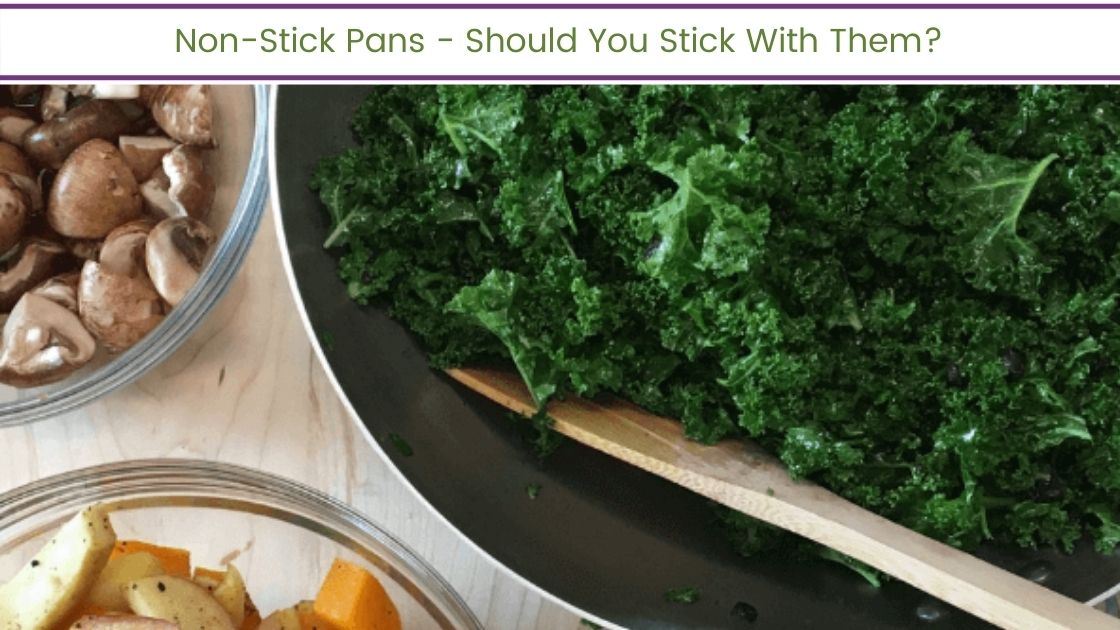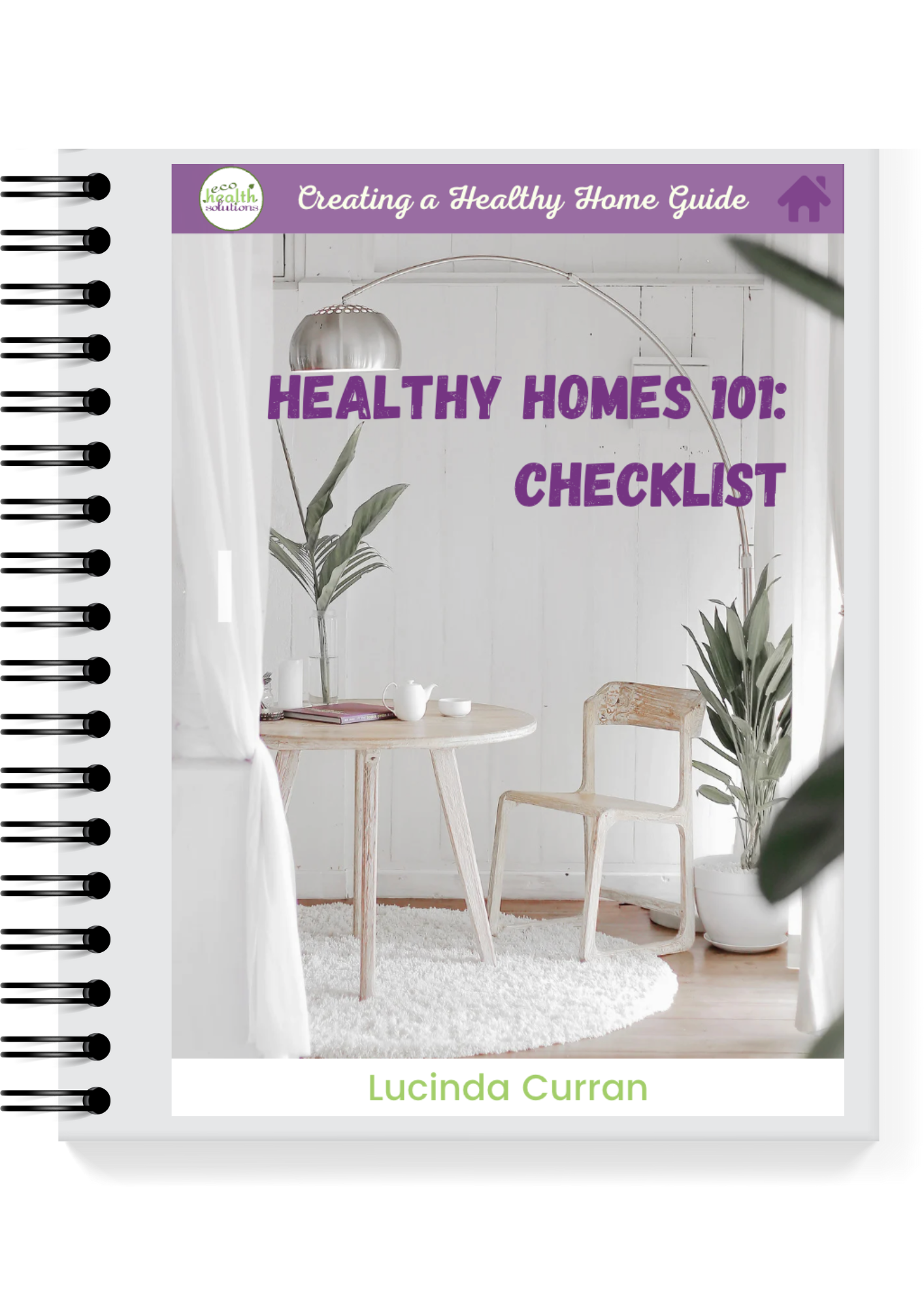The introduction of non-stick pans has allowed us to use less oil in our cooking, which is great. It is also easy to clean, make it a “tool of choice” for kitchen staff.
However there are a number of concerns about these products.
Non-Stick Pans: History
I love to understand why and how things come about, so here’s the story on non-stick pans.
Polytetrafluoroethylene (PTFE)
Back in 1938, there was a fellow by the name of Plunkett who was working for a chemical company. His job was to make refrigerants using tetrafluoroethylene gas. He noticed the canister registered empty before it weighed empty, so, he cut open a canister and discovered a slippery white waxy coating lining the inside of the tin. In 1945, the Teflon trademark was registered for PTFE.
By 1948, it was being used by DuPont in their marine products. In 1954, the wife of an engineer urged him to use the product he was using on his tackle (“Teflon”) on her cooking pans ~ and thus was born the first Teflon coated cooking pan! In the US, Marion Trozzolo had been using Teflon on scientific utensils, and in 1961 marketed the “Happy Pan.”
Perfluorooctanic Acid (PFOA) (aka C8)
The story isn’t so interesting here, just that 3M began using it in 1947 and DuPont in 1951. In 1999, the US EPA began investigating the toxicity of it, which resulted in 3M phasing it out. Not only is it used in non-stick pans, but waxed papers, dental floss and tape, stone, tile and wood sealants, and textiles products, particularly outdoor clothing.

Dangers
PTFE pyrolysis is detectable at 200oC (392oF) – which means it begins to break down from heat.
Studies have documented bird deaths from PTFE at 202oC (396oF), with reports of bird deaths from non-stick cookware being heated to 163oC (325oF). Interestingly, it is the degradation by-products that are lethal to birds and can cause flu-like symptoms in humans.
In 2003, the Environmental Working Group (EWG) petitioned the US government to have warning labels on products with non-stick coatings.
In terms of the temperatures I am talking about, this will give you a better guide:
Meat is usually fried from 204-232oC (399-450oF)
Smoking point for many oils is 260oC (500oF) – but safflower and avocado oil have a higher smoking point
Empty cookware that is heating can exceed this
Persisting…
PFOA persists in the environment – meaning that it does not breakdown. It is toxic and carcinogenic to animals. In 1961, DuPont was aware that it was causing hepatomegaly (enlargement of the liver) in mice fed with PFOA (Arneson 1961, Clapp).
2012 studies have linked PFOA exposure to kidney cancer, testicular cancer, ulcerative colitis, thyroid disease, hypercholesterolemia and pregnancy-induced hypertension (Nicole, 2013). It is thought the general population is exposed to it via stain resistant treatments, carpet cleaning liquids, house dust, microwave popcorn bags, water, food and some PTFE cookware.
Carcinogenic…
PFOA is recognised as being carcinogenic, toxic to the liver, toxic to the immune system, and as being an endocrine disruptor (particularly thyroid) (Lau, 2007). As well, it alters fat metabolism and oxidative stress.
New Generation
The new pots and pans are making a range of claims. Collecting adequate data from the companies was a tad difficult, so the following represents information gathered from websites, and where assumptions have been made, I have made it clear.
Woll
Woll have a video to show the manufacturing process.
There is no mention of PTFE or PFOA, but I assume from what they have said, that these are not used in creating this surface.
They use “diamond crystals” to create their non-stick surface. These are not really diamonds, but titanium dioxide (TiO2 CAS 13463-67-7). My research showed that titanium dioxide has the potential to react with aluminium (used in Woll cookware) and other metals at high temperatures resulting in a “violent or incandescent reaction” (you can read this in the MSDS here: http://www.chemicalbook.com/ProductMSDSDetailCB0461627_EN.htm). What constitutes a high temperature is unclear.
My other concern is that it appears that Titanium Dioxide Type 4 is used in cookware, and this is in the form of nanoparticles.
Due to the current lack of understanding of the safety of nanoparticles, I must err on the side of caution and not recommend this product.

Stonedine
Stonedine claim to be free from PTFE and PFOA. Two big ticks for these.
I really struggled to get meaningful information from the company to my specific questions – I really only had a staff member cut and paste information from their website that I had already read.
Stonedine says that the surface of their products “actually contains real stone particles that are directly bonded to the aluminium then fused to a 1/8 inch thick ferromagnetic stainless steel base plate…”
What I understand of this is that aluminium makes up some of the cooking surface.
I assume, because it has not been stated and I could not get answers, that the stone surface is something at least similar, if not the same as Woll’s.
Again, I would not recommend this product based on the information that I currently have – namely the nanoparticles of titanium dioxide and the aluminium on the cooking surface.
FlavorStone™
These pans are claimed to be PFOA-free. Here’s a quote direct from their site “FlavorStone™cookware is manufactured using the latest advances in technology and design. FlavorStone™ cookware is highly durable and is designed to last as long as the tough sapphire gemstone that inspired its name.”
In terms of more helpful information, it has, “multiple layers of water-base [sic] non-stick coating” and has an aluminium alloy core with a stainless steel induction base.
It sounds like the aluminium is not in contact with the food – which is a good thing.
However, there does not seem to be enough information provided about what the non-stick coating is.
I have trawled through their site and manuals, and have come to the conclusion (an assumption) that the surface may in fact be PTFE. This is based on the care instructions which are very much focused on temperature, and the durability seems less than the two mentioned above – suggesting that the surface is quite different.

My Recommendations
Stove-Top:
- Good old-fashioned stainless steel pots and pans win hands-down for me.
- If you have a problem with nickel, you can get a form of stainless steel that is 18/0 (ie 0% nickel). SolidTeknics have a range (Nöni™) which are stainless steel and nickel-free
- Ceramic cookware, such as Silit Silargan
- Wrought Iron, such as SolidTeknics Aus-Ion™ Satin range
Other options:
- Pottery pots and pans (where the glazes do not contain lead);
- Enamel pots and pans
Baking:
We haven’t really focused on this at all here, but I do need to say very clearly, that I do NOT recommend silicone bakeware. Also, please avoid baking sheets and bags as these are coated with silicone.
What I do recommend is:
- Borosilicate glass;
- Glass ceramics – such as Corningware; and
- Traditional pizza stones.
#nonstick #cooking #healthyfoodprep
UPDATED: 16 December 2019
References:
Arneson, Gerald J. (November 1961) “Toxicity of Teflon Dispersing Agents” DuPont, Polychemicals Department, Research & Development Division, Experimental Station
Clapp, Richard; Polly Hoppin, Jyotsna Jagai, Sara Donahue “Case Studies in Science Policy: Perfluorooctanoic Acid” Project on Scientific Knowledge and Public Policy (SKAPP)
DanozDirect (2014) FlavorStoneTM(multiple related pages) viewed online at http://www.danozdirect.com.au/flavorstone/
Lau C, Anitole K, Hodes C, Lai D, Pfahles-Hutchens A, Seed J (October 2007) “Perfluoroalkyl acids: a review of monitoring and toxicological findings” Toxicol. Sci. 99 (2): 366–94
Nicole, W. (2013). “PFOA and Cancer in a Highly Exposed Community: New Findings from the C8 Science Panel” Environmental Health Perspectives 121 (11–12)
StoneDine (n.d.) Stonedine (multiple related pages) viewed online at http://www.stonedine.com/
The Chemical Book (2008) Titania (13463-67-7) viewed online at http://www.chemicalbook.com/ProductMSDSDetailCB0461627_EN.htm
Woll Cookware (2014) Woll Cookware (multiple related pages) viewed online at http://www.woll-cookware.com.au/
photo credit: Marty Harrington on Unsplash














0 Comments